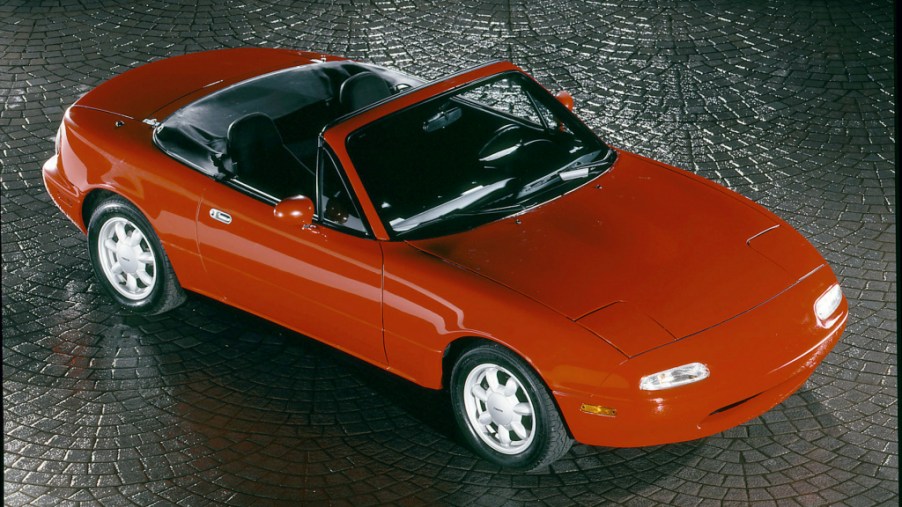
This Mazda MX-5 Miata and a Koenigsegg Hypercar Share 1 Major Component
Since its introduction in the late 1980s, the Mazda MX-5 Miata has existed as an affordable sports car for the masses. Part of what makes this Mazda so successful comes down to its simple yet effective recipe. However, a YouTuber named Wesley Kagan decided to take things up a notch.
In a recent series of videos, Kagan took inspiration from Koenigsegg‘s FreeValve engine design and applied it to a small engine first. However, things have stepped up, and Kagan now has a running and driving Miata with Koenigsegg-inspired engine tech under the hood.
What does this Mazda MX-5 Miata have in common with a Koenigsegg?
Before diving into this Mazda MX-5 Miata story, it is worth looking into Koenigsegg’s FreeValve technology itself. In most normal engines, you have a cylinder head that features a camshaft. However, Koenigsegg’s design does not require a camshaft at all. Instead, an actuator opens up the intake and exhaust valves.
According to Engineering Explained, since there is no camshaft, the valves can stay open for longer, improving airflow. As a result, these engines can generate tons of power while remaining fairly efficient. This is the technology that Kagan decided to work with. However, before Kagan modified a Mazda MX-5 Miata, he started with a small engine from the hardware store.
While this first run was more to prove the concept than generate power, Kagan managed to design his own FreeValve system. However, after a successful run with the hardware store engine, Kagan decided to take on a car engine next.
This modified Miata runs and drives
Part of what makes this Mazda MX-5 Miata story interesting is that Kagan designed most of the components for this build. The donor car has a naturally-aspirated 1.6-liter four-cylinder engine under the hood. Additionally, it features a manual transmission. Since this example has covered well over 100,000 miles, it is the perfect candidate for major surgery.
After designing and machining most of the physical components of this Mazda MX-5 Miata build, Kagan began wiring the whole thing up. In the video embedded above, we see that it took a few days of tinkering to get the FreeValve system to work.
However, eventually, the tiny sportscar roars into life, and Kagan decides to take it out for a drive. As you’d expect, the drive was fairly easy on the powertrain. Regardless, Kagan proved that the system could be scaled down and implemented on older vehicles.
Is this applicable to other cars?
While Kagan’s Mazda MX-5 Miata is far from a finished product, it proves that the system works outside of hypercars. Additionally, Kagan wants this information and his designed to be widely available for free. As a result, Kagan mentions in his video that he will eventually provide his audience with the necessary CAD and code files. The goal here is to advance this technology via extensive collaboration.
As for Kagan’s Mazda MX-5 Miata, the system will continue getting updates and refinements as time goes on. However, Kagan is also working on a V12-powered homemade F1 car, which might take quite a while.


